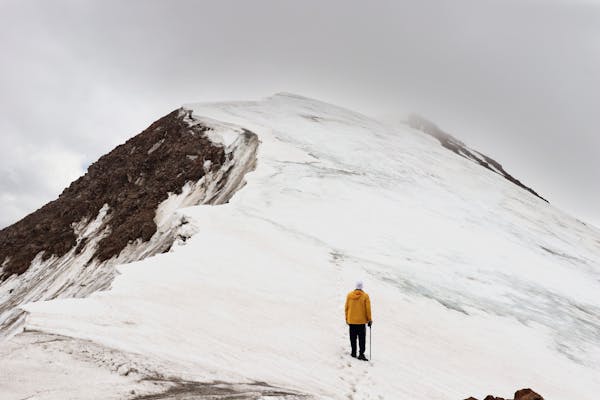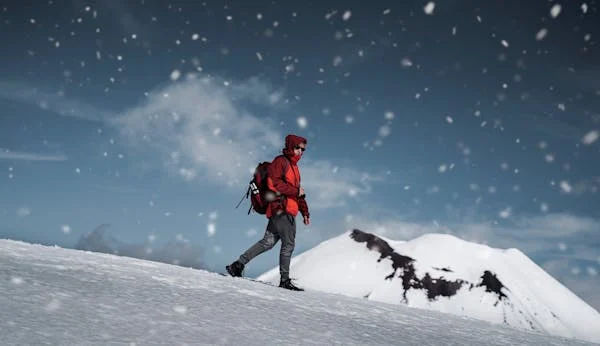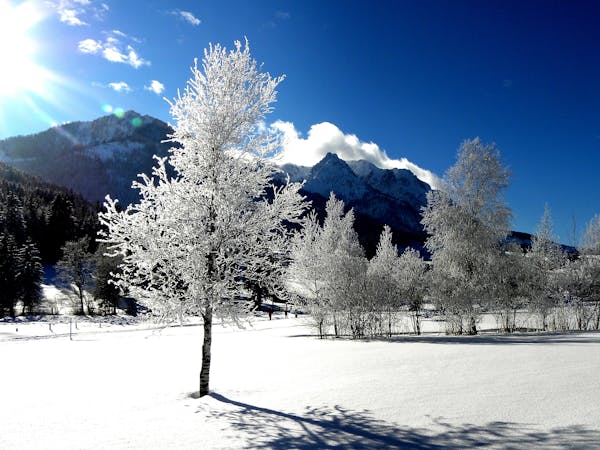Cold Weather Hiking Gear. The crisp winter air, the landscapes covered in snow, and the quiet beauty of a winter hike hold a unique experience for outdoor lovers looking to get out in nature during winter. While summer paths are warm and filled with wildflowers, winter offers a chilly and magical experience.
Hiking in the cold needs careful preparation, especially when it comes to choosing the right winter hiking clothes and gear. In this principle, I’ll walk you through the essential winter hiking gear, from layering techniques to insulated outerwear, waterproof gear, and supplements. The goal with winter hiking gear is to stay friendly, dry, cozy, and safe. So, gear up, embrace the cold, and get ready to investigate the beautiful winter wonderland!
Note that this guide is for non-avalanche sites. If you hike somewhere where avalanches are likely, please get the proper training and bring the proper avalanche gear.
Clothing and Gear Tips for Cold-Weather Hiking

To stay comfortable on a cold-weather hike, it’s essential to wear the right clothing and carry the right gear.
Wear layers:
Layering is a three-part plant that includes a base layer that wicks perspiration away from your skin, a mid-layer that insulates you from the cold, and a shell layer that keeps wind and moisture out. The plan with layering is to add and remove layers throughout your hike so you can stay warm and comfortable without overheating and getting sweaty. It can feel like a chore to control and change clothes, but it’s really important to stay dry. Getting damp on a cold day can lead to hypothermia.
Say no to cotton:
When cotton gets wet, it takes a very long time to dry, which can leave you feeling damp, cold, and sad. Synthetic and wool layers dry much faster and will move perspiration out from your skin.
Cover your skin:
Any skin that is uncovered to freezing temperatures and cold wind is prone to frostbite. Take particular care of your nose, cheeks, ears, fingers and toes.
- For your hands, try wearing lightweight or midweight wool gloves under waterproof shell mittens or shell gloves. It’s also a fine idea to bring an extra pair of fleece gloves that you keep stowed in your pack in case the ones you’re wearing get wet.
- For your feet, wear synthetic or wool socks that fit nicely. Thicker socks provide more insulation, but make sure they don’t drive your boots to fit too tight, which can cut off circulation. It’s also necessary to keep your feet dry, so carrying an extra pair of socks to change into is a good idea. Wear waterproof boots if you’ll be walking through snow, and if you’ll be in very cold temperatures you might require boots with built-in insulation.
- For your nose and cheeks, try a neck gaiter for a front mask.
- For your ears, a winter hat or headband can do the joke. A neck gaiter or face mask may also provide scope for your ears.
Cold Weather Hiking Gear

Avoid tight clothing:
Wristwatch bands, cuffs of gloves, gaiters, and boots that are too fast can cause poor circulation, which can increase your chance of contracting frostbite. Make sure your clothing and gear fit correctly.
Add heat:
Hand warmer and toe warmer packets are a great way to warm up your digits, particularly if you’re prone to cold fingers and toes.
Wear a hat:
You can lose heat through the lid of your head, so pull a winter hat on if you’re feeling chilly.
Keep snow out with gaiters:
If your hike will take you via deep snow, gaiters are a must for keeping snow out of your boots. They also add a bit of warmth. Be certain to use waterproof/breathable gaiters for hiking in snow.
Carry goggles or sunglasses:
Always save your eyes from the sun and wind. Many goggles and some sunglasses allow you to change lenses in and out so you can select the right lens tint for the weather. Get some advice on buying goggles and sunglasses.
Pack a headlamp:
If you’re hiking in winter, you’ll have fewer daylight hours, particularly if you’re in the northern part of the U.S. You don’t have to end your trip when the sun goes down, but you must be prepared to hike in the dark. Have a feeling of how many hours of usable daylight you have and always pack a headlamp with fresh batteries.
Keep batteries warm:
Cold weather can kill guns quickly. Lithium batteries tend to keep up better in cold temperatures than alkaline batteries, but no matter what battery type you use, it’s best if you try to keep them friendly. Keeping your headlamp, GPS, cellphone, and other electronics in a pocket close to your body can benefit.
Apply sunscreen:
Just because it’s cold out doesn’t mean you quit worrying about sunburn. If there’s snow on the ground, the sun’s rays can reflect up at you, so you need to be diligent about using sunscreen on the underside of your nose and chin and around your neck.
Bring the Ten Essentials:
The Ten Essentials are a group of items that help outdoor adventurers be prepared for emergencies. It’s wise to take these items along whenever you run out for a hike, but perhaps even more so when exploring in cold weather where the consequences of a mishap can be more severe.
Cold Weather Hiking Gear

Pros of Winter Hiking:
- 1-No crowds
- 2-No bugs
- 3-Good air quality / no wildfires
- 4-Stay engaged in an outdoor activity all year long
- 5-Experience your favorite trails from a different perspective
Conclusion
Equipping yourself with the right cold-wave rainfall hiking gear allows you to completely enjoy downtime’s beauty while staying safe and warm. From layering to choosing insulated thrills, gloves, and a dependable pack, each piece of gear plays a pivotal part. With thoughtful medication and the right outfit, you can explore the trails confidently, ready for any conditions downtime throws your way.
FAQs
1. What should I wear for cold rainfall hiking?
For cold rainfall hiking, wear a base subcaste for humidity control, an amid layer for sequestration, and a leakproof external subcaste. These three layers help keep you warm, dry, and protected from wind and humidity.
2. Are insulated thrills necessary for downtime hiking?
Yes, insulated thrills are essential for downtime hiking as they keep your bases warm and dry. Leakproof sequestration helps frostbite and adds comfort, especially in snow or on wet trails.
3. Why is layering important in cold rainfall hiking?
Layering allows you to regulate your body temperature by adding or removing apparel as demanded. It helps trap body heat while wicking down humidity, keeping you comfortable and precluding overheating or indurating.
4. What accouterments are stylish for base layers?
Merino hair and synthetic fabrics like polyester are great for base layers because they wick humidity down and dry snappily. Avoid cotton, as it absorbs humidity, leaving you cold.
5. How do I keep my water from indurating on a downtime hike?
isolated water bottles or hydration bladders help keep water from freezing. You can also store your water bottle inside your pack or close to your body to retain warmth.


[…] you’re hiking the Scenic Loop or Forest Ridge Trail, packing the rudiments is crucial. Carry enough water, high-energy snacks, and a first-aid tackle for safety. A chart of the trails […]